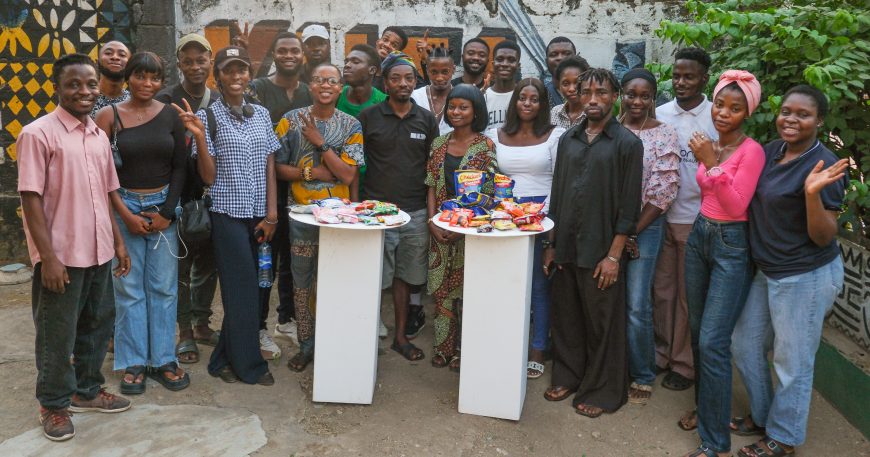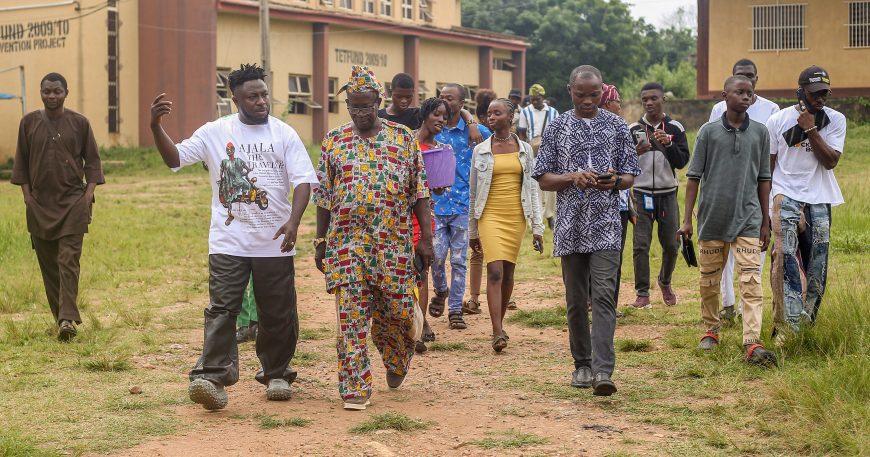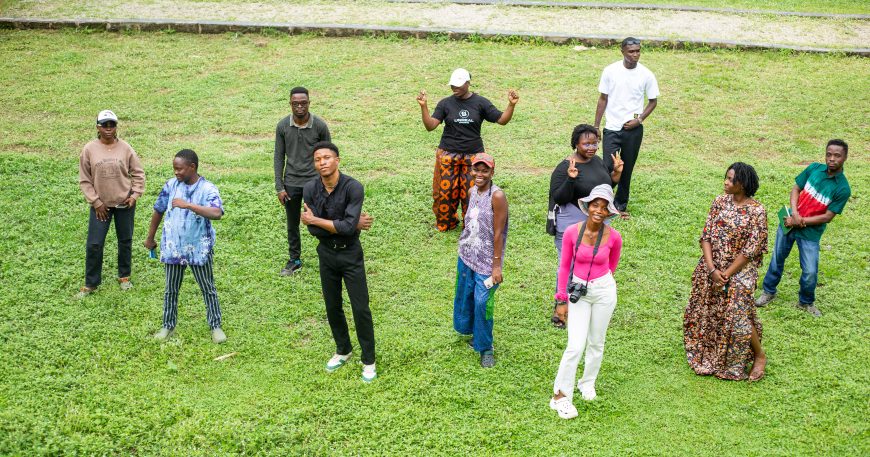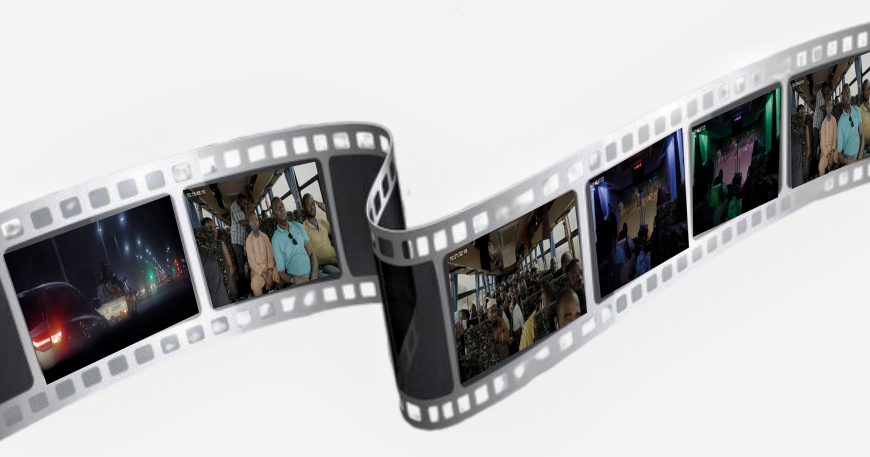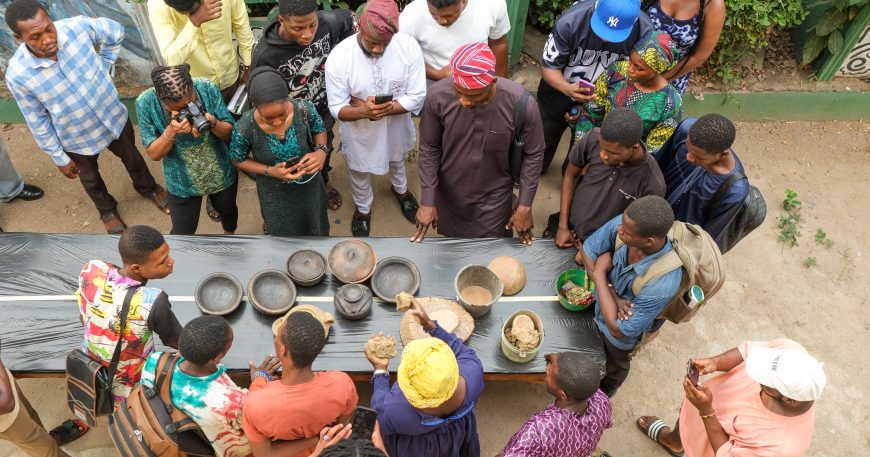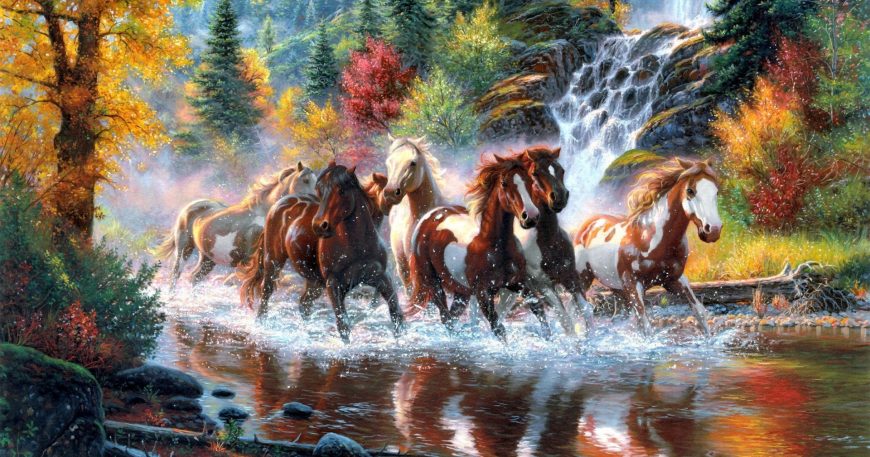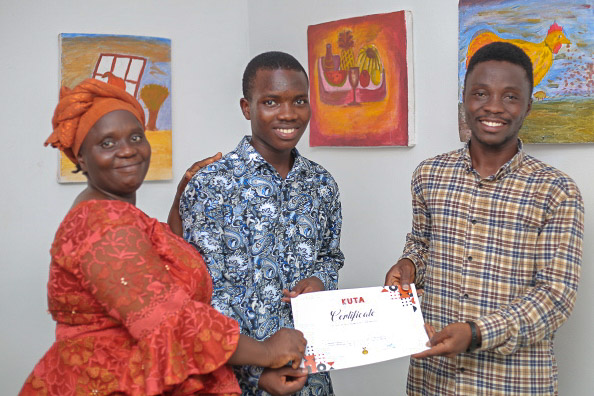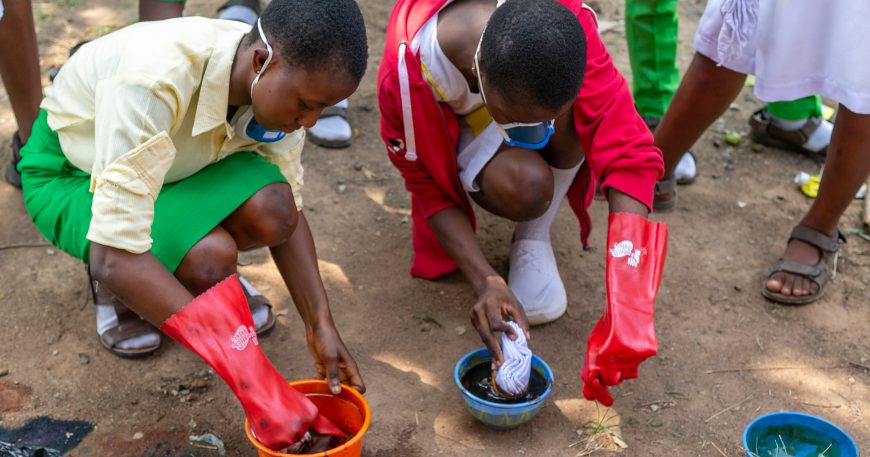On June 1st, 2025, three strangers and I stormed a live-in facility in Abeokuta, armed with luggage, journals, and a wrap sheet of experience points no shorter than the Niger River. There were no “how are you?” or “we brought you X and Y?” Just the palpable energy of minds on a mission, and a tingly unease about the future. The following day, we’d begin our stint for the CLF Bootcamp, but that night, we waited quietly, pulling out PCs, outfits, and stationery–weapons of impact. It was setting the tone for what would be the most beautiful, exhausting, and somewhat rewarding two weeks of my life. We had strolled in early like the second coming of Basquiat, if he had rolled in with a duffel bag and on his lips a tang taste for cultural revolution. In the weeks to come, the real work would happen, but before that, some backstory. The Creative Leaders Fellowship (CLF for short) was designed to equip emerging creative leaders with essential mindsets for the unsexy-but-crucial work of creative administration, professional development, and impact-making in a rapidly evolving meatgrinder world. Made possible by a joint handshake between the Kuta Arts Foundation, the African Creative Hubs Network, and a fat sponsorship hug from the Goethe-Institut’s Residency Resource initiative, the program was intended to stretch us. Not physically–despite breaking a sweat and rethinking my entire career choice midway–but mentally, from a problem-solving perspective. It brought together artists, arts and culture workers, and community builders under one roof for fifteen days of what I can only describe as an incubator for rebel creators/managers. For me, it was a pause from the long, ambidextrous hustle I’ve come to know as life in Lagos. It was my way of taking a long-needed breather right before a major next move as a thinker and writer-director. For two weeks, we converged at NestbyKuta for our 9:00 AM meetings. It was a dizzyingly fiery experience, pulling tables together for some reflective war-room-level strategizing. In there, we unpacked our individual histories: who we were, what we did for work, why we were here, and where we were headed, career-wise. There, we trashed ideas, biases, casting light on recurring opportunities and backroom con-games going on in the creative arts and culture world, each person reaching for their pie of rollercoaster stories to hand out to a group of salivating minds. There’s just something delicious about diverse minds tabling their experiences before a jury of ears. It’s raw, atrocious, and disturbingly satisfying. We also pored over literature from Kuta’s growing library, assigning which books to whom, based on their career goals. My favorites were RESEARCH FOR PEOPLE WHO WOULD RATHER CREATE & THE SOURCE. When we weren’t plotting revolutions around the round table, we took strolls. We’d walk from Oke-ilewo to Jide Jones, around Housing Estate, G.R.A., taking photos of Eid parties (Eid Mubarak was ongoing), inhaling the spirit of a quiet but culturally robust suburban area. You could sense it in your bones, the scent of freshly cut grass, the structures of ordinary houses, and, especially, their sight-for-sore-eyes appeal. It all screamed, ‘This is RockCity! Nowhere else,’ and I just wanted to cry. It was such a come-to-Jesus moment for me as I recalled the chaotic, soulless, copycat architecture eating at Lagos’ real estate. Amid the Eid celebration, we had some team exercises. All that walking around wasn’t for show. We were scouting, spotting communal problems, and documenting them. We would eventually have dialogues about our findings, pitching projects that could address observed issues. It felt like being thrust in the middle of a maze and told to find your way. Scary at first, but you get the dance eventually. Fast-forward to Saturday. The whole street feels like a defrosted freezer, icy smoke cradling the air. We grudgingly grab shovels and plastic bags, marching towards Tegoe Street. ‘Grudgingly’ because it had rained and sleep was still, well, deep in our system. Our task that morning involved clearing out the trash-laden stretch of Tegoe Street, the very community where NestbyKuta is situated. This was the day after the Eid celebration, so there was enough trash to deal with. The smell hit before anything else: sour leftovers, old nylons, broken ceramics, wet paper, all triggered by the long, unconscious habits of residents in need of a little spanking. Not that I wasn’t an indirect participant. I had walked that road a few times, and somehow, I had stared at the same trash a couple of times and not noticed it, nor thought to do jack about it. What do I call that? Willful ignorance? Cognitive avoidance? Therapists in the house, drop a light bulb, would you? And so, we shoveled and bagged, throwing bants, some grooving to music, others canvassing to get other residents involved. Here we were, creators, culture producers, laughing through the stench. It was a cleansing ritual. We managed to get a resident involved. That evening, having freshened up, we had a potluck masquerading as a watch party. There we saw a livestream of the Global Leadership Summit 2018, featuring fascinating takes on vision engineering like ‘focusing on why you started’ (Dr. Nthabiseng Legoete, Quali Health), ‘cutting your vision to the continuity of a human need’ (Strive Masiwa x T.D. Jakes), and how leaders ‘see what others don’t see’ (John Maxwell). One of my biggest takeaways from the fellowship was something the facilitator mentioned on the first day of the program. Something along the lines of: creators on the lookout for patrons need to rethink what/how they create. Collectors of art aren’t just looking for something fancy to add. They’re thinking legacy. Investment. They’re thinking posterity pieces (heavily paraphrased). This thought has haunted me since the last time I revisited my notes. As creators and producers of culture, it’s too easy to get swept into the I-want-to-just-express-me-for-me narrative. And there’s really nothing wrong with that. But it’s also crucial to ponder the cumulative


